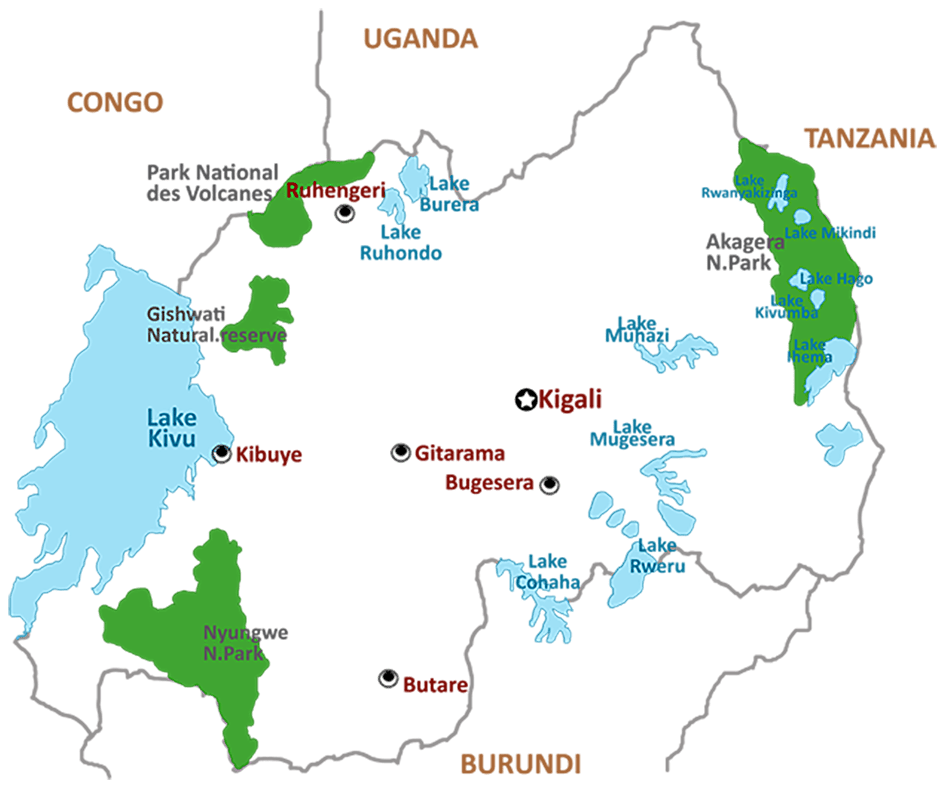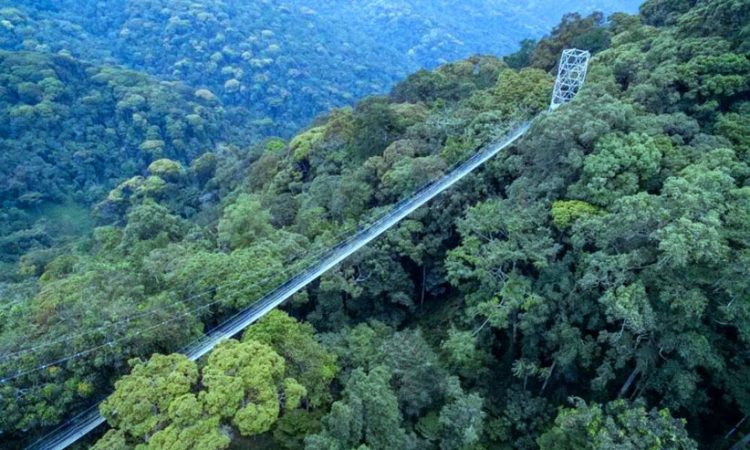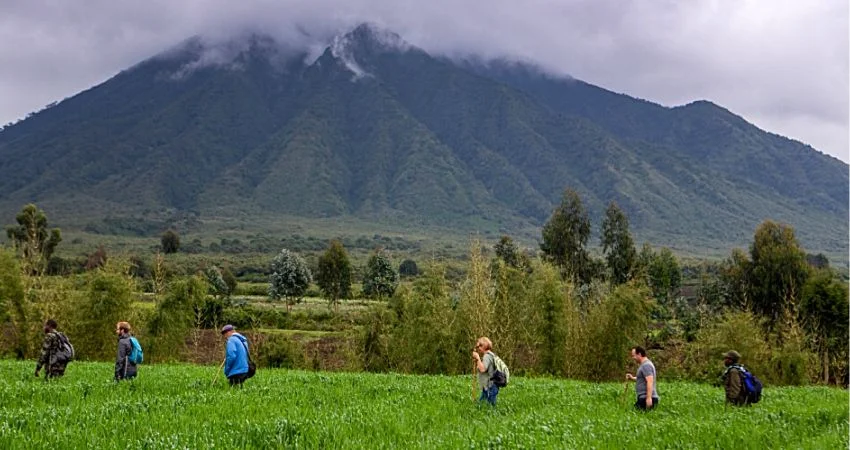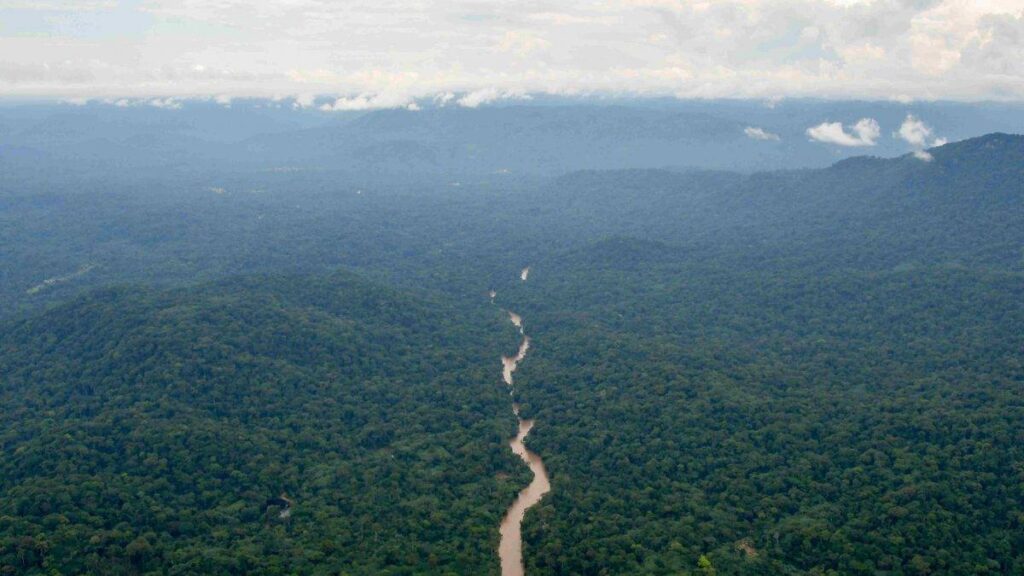Map Of Rwanda National Parks
Map of Rwanda National Park: Getting a glimpse of life from a mountain gorilla is an experience of a lifetime. But Rwanda offers much more than that. Volcanoes National Park is the best place to go gorilla trekking. The Big Five can be found in Rwanda’s lone savannah national park, Akagera National Park, while over 300 chimpanzees and 12 other primates can be found in Nyungwe Forest National Park, which is located in the country’s southwest district. What could be better than lounging on the stunning and glittering shores of Lake Kivu for a few days?
Rwanda’s Wildlife.
Because of its location in the Albertine Rift, which is recognized as a biodiversity hotspot, Rwanda is home to an astounding variety of species. There are numerous other primates to observe besides gorillas and chimpanzees, such as Ruwenzori colobus and golden monkeys. Hippos and crocodiles can be seen up close on boat trips, while the Akagera savannah grasslands are home to a wide variety of wildlife, including giraffes, buffalo, zebras, and defassa waterbucks. And there are always lions nearby.

Rwandan National Parks map.
A level of diversity rarely found in East Africa may be found in Rwanda’s national parks, which include Savannah plains in Akagera National Park in the East, montane forests in Nyungwe National Park in the Southwest, and rainforest on the West slopes of the Virunga Volcanoes. When these national parks are combined, they provide an amazing journey across one of the most dynamic regions in Central Africa.

The well-managed national parks of Rwanda, complete with clearly marked entrance fees and amenities, as well as a selection of cozy lodging options, serve as a testament to the wildlife regulators.
Akagera National Park.
Akagera National Park, a low-lying park close to Tanzania’s border, is Rwanda’s equivalent of some of the savannah reserves found in Eastern Africa. Map of Rwanda National Parks Those looking to focus their itinerary on Rwanda but with some variety may want to include this. The habitat of undulating plains covered in dense woodland and grassland, leading to swamps, lakes, and papyrus forests in the far East contrasts sharply with the mountainous landscapes for which Rwanda is famous.
The first national park in Rwanda, Akagera, was established in 1934 with the intention of protecting the species present in its varied environments, which include plains, mountains, and swamps. The park is rather tiny, covering only about 900 square kilometers, yet its geography varies greatly from West to East. The park is accessible from Kigali in just two hours by car, making a quick day excursion from the capital conceivable.
Many different species can be found in Rwanda‘s Akagera National Park’s undulating plains, including buffalo, elephants, impala, giraffes, zebras, and other antelope. You might see crocodiles on the banks of rivers or hippos lazing in the lakes. A boat trip along the rivers may allow visitors to witness the area’s abundant wildlife, which includes raptors and water birds in the wetlands. Only at Nyungwe National Park can one see certain species of birds, such as crowned cranes, storks, fish eagles, herons, cormorants, and egrets, among other water birds.
Mantis Akagera National Park, Rusizi Tented Camp, Karenge Bush Camp, Akagera Transit Lodge, and Akagera Rhino Lodge are among the lodging options available within Akagera National Park.
Nyungwe Forest National Park.
Nestled in the Southwest of Rwanda, Nyungwe Forest is a genuine rainforest with annual rainfalls of up to 2,000 mm. It is one of Africa’s oldest forests and was proclaimed as a national park in 2004. As the largest single area of montane forest in Central/Eastern Africa, the region is crucial to Rwandan tourism. With waterfalls, an abundance of wildlife, and views over the gorgeous countryside, it is unquestionably one of the main draws in the nation.
The national park is teeming with wildlife, particularly for those who are fond of monkeys, as its verdant forests serve as a haven for 13 different species.

There aren’t many places to stay in the Nyungwe Forest national park, but the one & only Nyungwe Forest Lodge has well-appointed apartments and villas with a stunning location overlooking the forest canopy. In addition to canopy skywalks and amazing trekking tours of varying lengths to observe the primates of the forest, your hotel may even provide you with a view of monkeys moving through the forest. The Gisakura Visitor’s Center, Kitabi Eco Center, and Nyungwe Top Hill View Hotel are among the other lodging options in Nyungwe.
Volcanoes National Park
Northwest Rwanda is home to Volcanoes National Park, also known as National Volcanoes Park, which borders Uganda and the Democratic Republic of the Congo. The area that borders the park is mostly agricultural, but once within, it changes into a thick, evergreen forest. Encompassing 8,000 square kilometers, this magnificent territory safeguards five of the nine incredibly spectacular Virunga Mountains. Each has steep hillsides encrusted with a thick layer of verdant jungle.
Twelve groups of mountain gorillas call Volcano National Park home, and hiking the Vol to witness these threatened species is an unforgettable experience. It’s a firsthand encounter. Here, you will have the opportunity to locate a 400-pound silverback and a mother cuddling her cubs. We only work with the greatest guides, who look for these cute animals in their native habitat using their knowledge and tracking prowess.

In and around the park, there are a variety of hotel options, many of which are environmentally conscious. The most notable of these is the Virunga Lodge, which is carved out of the mountainside and provides breathtaking views of Lakes Burera and Ruhondo in addition to the Virunga volcanoes.
A host of other hotels, such as Virunga Resort Inn, Tiloreza Volcanoes Eco Lodge, Sabyinyo Silverback Lodge, One&Only Gorillas Nest Lodge, Muhabura Hotel, Le Bambou, and many more, are located near the park and offer breathtaking views and comfortable lodging. Our primary objective is to bring you as close to the animals as we can without compromising your comfort, and we offer a range of lodges that will do just that. This will enhance your entire experience and provide that extra bit of luxury when you get back from a tiring day in the wild.
Gishwati Mukura National Park
A buffer zone of thirty miles separates the two woods that make up Rwanda’s Gishwati-Mukura National Park: the larger Gishwati Forest and the smaller Mukura Forest. This is not a national park in the conventional sense. Rather than preserving an area of great natural beauty, Gishwati-Mukura National Park is a continuing conservation project meant to offset one of Central Africa’s best examples of environmental decline.
In 2015, Gishwati Mukura was gazetted as a national park, and in 2019 it was made public. To name a few, the national park offers guided nature excursions, birdwatching, chimpanzee trekking, and monkey tracking.

When is the best time to travel to Rwanda?
Any time of year is a good time to visit Rwanda, but since it rains a lot, April is the wettest month. The pathways can be rather slick during these months, which makes gorilla trekking more challenging. Rain can potentially ruin your unique and time-limited gorilla trekking experience. All things considered, June through September is the best period to travel to the country because of the increased likelihood of bright weather and the increased visibility of animals.



